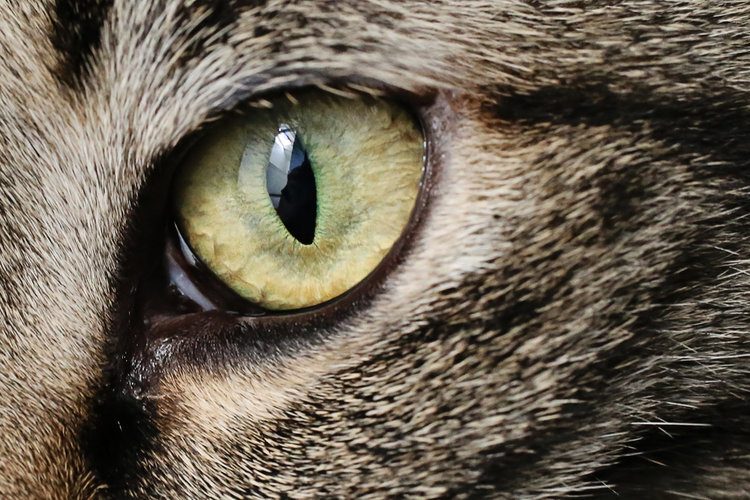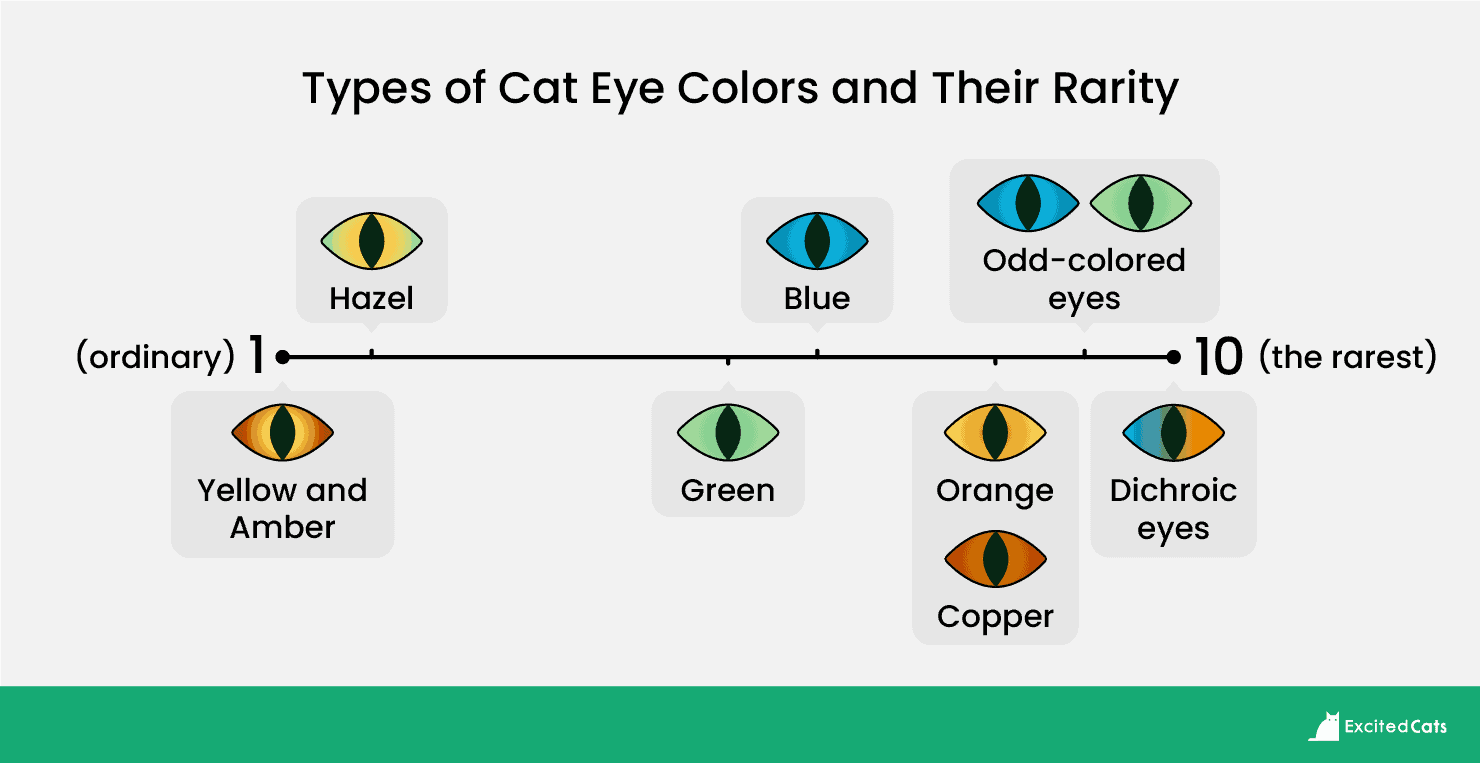Many cat parents can happily get lost staring into their cat’s beautiful eyes. But do you know if your cat has a rare eye color? Domestic cats can have more eye colors than many other domestic species, including dogs.
While some eye colors are linked to specific breeds, others can be found in many purebred and mixed-breed cats.
Eye Colors and Their Rarity
Let’s take a look at all the possibilities for a cat’s eye colors. We’ve included eight typical eye colors seen across a wide range of cat breeds. We’ve also listed their rarity on a scale of 1–10 so you can know if your cat has an unusual shade!
These colors aren’t discrete, so you may find it difficult to pin your cat’s exact eye color into a specific shade. Maybe your cat has an eye color that sits somewhere between two shades. It’s easier to think of cat eye colors as a spectrum of shades that blend into each other rather than distinct bands.
The 8 Cat Eye Colors
1. Blue Eyed Cats
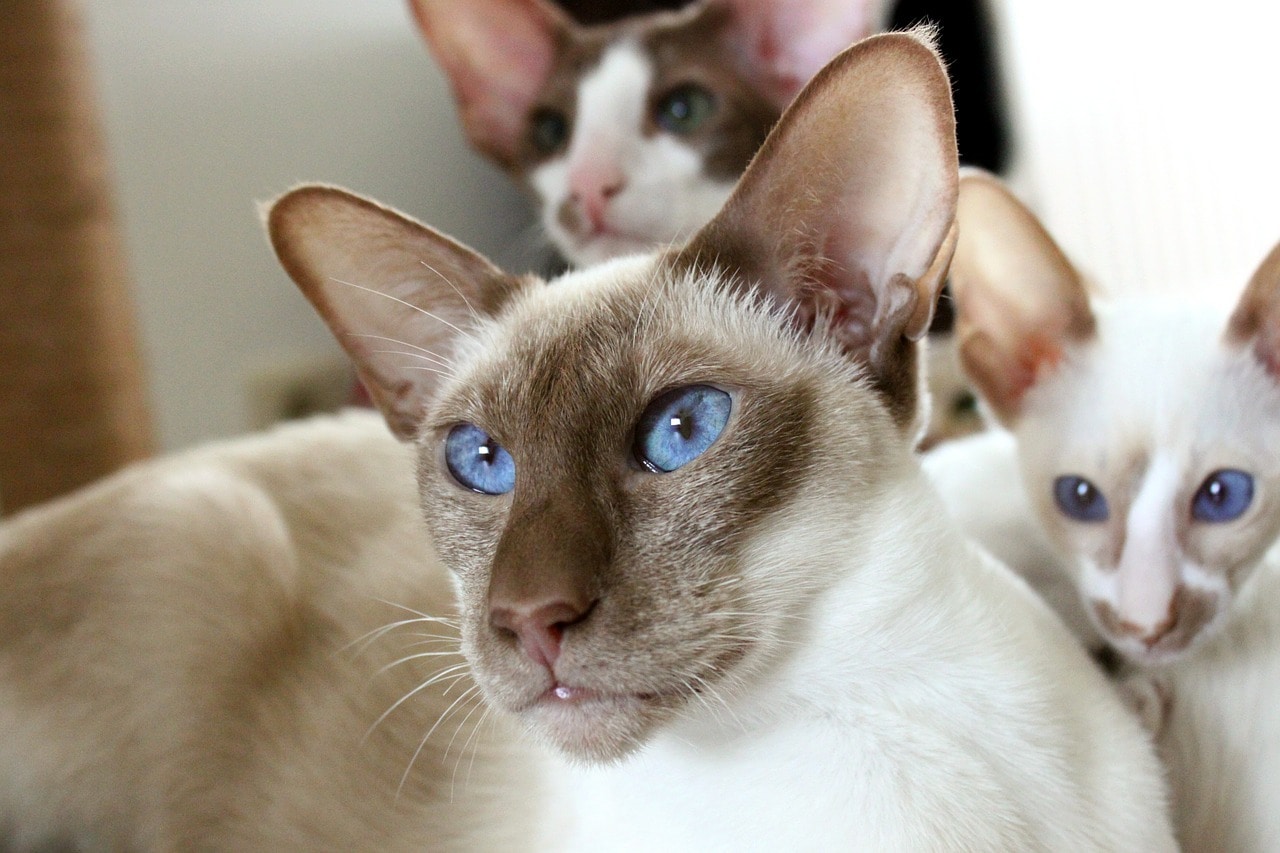
Cats with blue eyes don’t have any melanin in their irises. Blue cats’ eyes are clear, but we see the blue color due to light reflecting around the curved sides of the irises. It sounds far-fetched, but it is true! Blue eyes can range from a pale sky blue to a deep and brilliant sapphire.
Blue eyes are far more common in white cats. This is due to the dominant white gene known as the epistatic white gene. It blocks out any other genes that code for color, which results in a completely white coat. White cats with blue eyes, due to the dominant gene, are also at higher risk of being deaf than white cats with green or yellow eyes. The gene that codes for a white coat and blue eyes can cause the cochlea of a cat’s inner ear to degenerate within days of birth.
Some breeds are known for their distinctive blue eyes. These include the well-known Siamese and Ragdoll breeds. Other cats that can have blue eyes include the American Shorthair, British Shorthair, Balinese, Persian, Maine Coon, and Devon Rex.
Tonkinese cats have an unusual aqua-blue eye color that isn’t seen in any other breed.
️ Rarity: 6/10
2. Green Eyed Cats
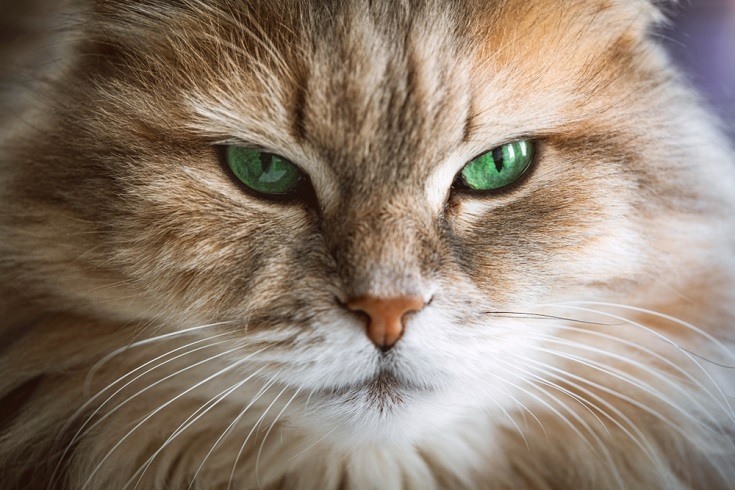
The green of a cat’s eyes can vary from a green with yellow undertones to a true green and a green mixed in with shades of blue. It’s also possible to see flecks of gold or yellow within the iris of a green-eyed cat.
Green eyes are found in breeds like the Egyptian Mau, which has green eyes in a bright gooseberry shade. Havana cats have emerald green eyes, and Norwegian Forest Cats can have eyes in various green tones. Russian Blue cats also have vivid green eyes!
️ Rarity: 5/10
3. Hazel Eyed Cats
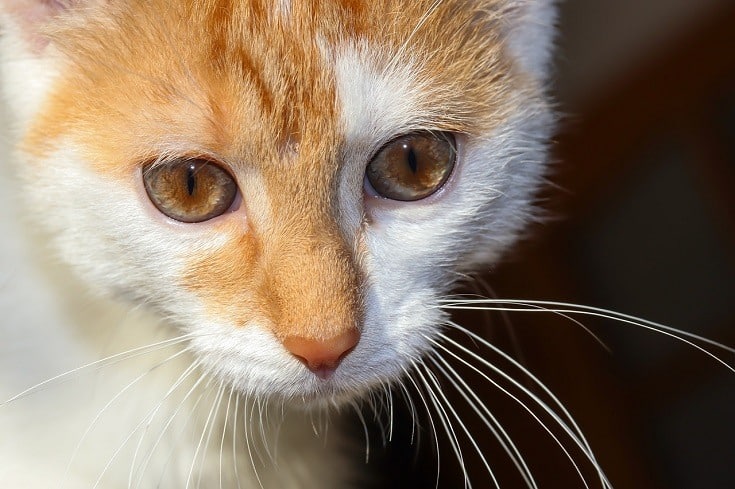
Hazel eyes are a blend of green and golden yellow. This is the eye color of most wild cats in temperate regions, including Lynx and Bobcats. It’s also a standard eye color in feral cats. Breeds with hazel eyes include the Abyssinian, Bengal, Singapura, Cornish Rex, and Scottish Fold.
️ Rarity: 2/10
4. Yellow and Amber Eyed Cats
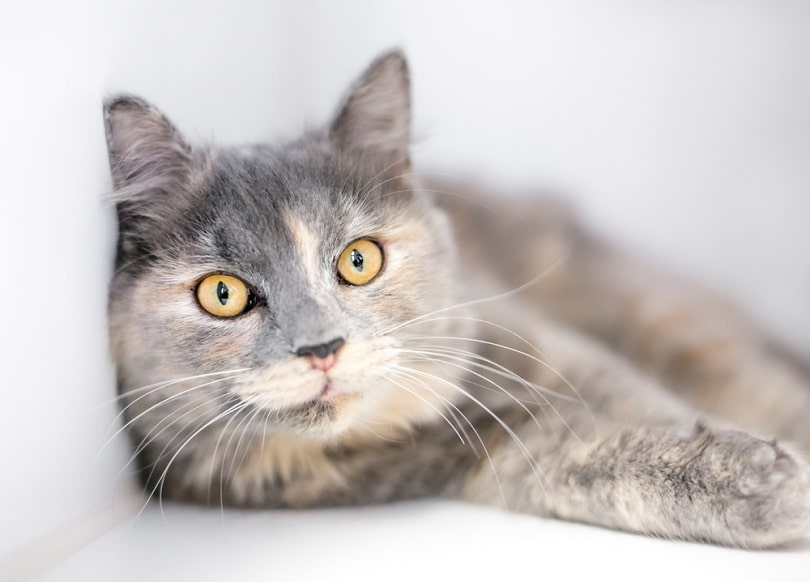
Yellow eyes can range from a pale lemon yellow to golden shades, merging into a deep and rich amber.
Breeds with yellow or amber eyes include the Bengal, American Shorthair, Manx, British Shorthair, LaPerm, Bombay, Sphynx, and the Norwegian Forest Cat.
The Burmese cat breed can have particularly striking golden eyes, with show cats often having shades of impressive brilliance and depth.
️ Rarity: 1/10
5. Orange Eyed Cats
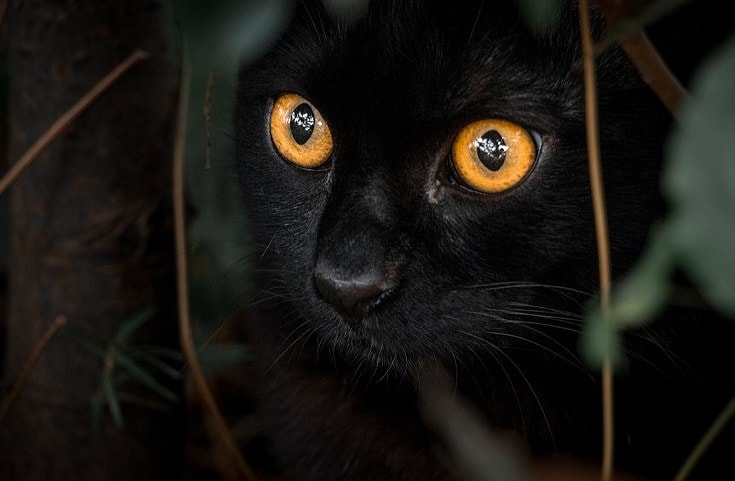
While it can sometimes be difficult to define the difference between a green eye with yellow flecks or a yellow eye with hints of green, there’s no confusion when it comes to orange cat eyes. This color was originally developed by British cat breeders who wanted an eye color that could stand out in vivid relief against any coat color.
Breeds including the Devon Rex, Japanese Bobtail, American Wirehair, Maine Coon, and Turkish Van can all have orange eyes.
️ Rarity: 8/10
6. Copper Eyed Cats
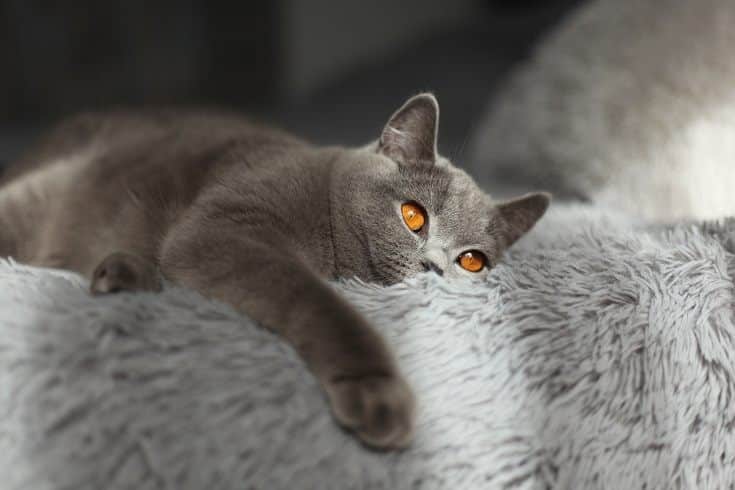
Copper is the darkest eye color you’ll see in cats. Their eyes will be light brown with tones of red and orange. Sometimes there may be flecks of yellow, green, or orange. This is a rarer color than some others, and while it’s distinguishable from orange, it’s just as unusual.
The Japanese Bobtail, Maine Coon, Persian, Cornish Rex, and Chartreux can all be found with striking copper eyes.
️ Rarity: 8/10
7. Odd-Colored Eyes
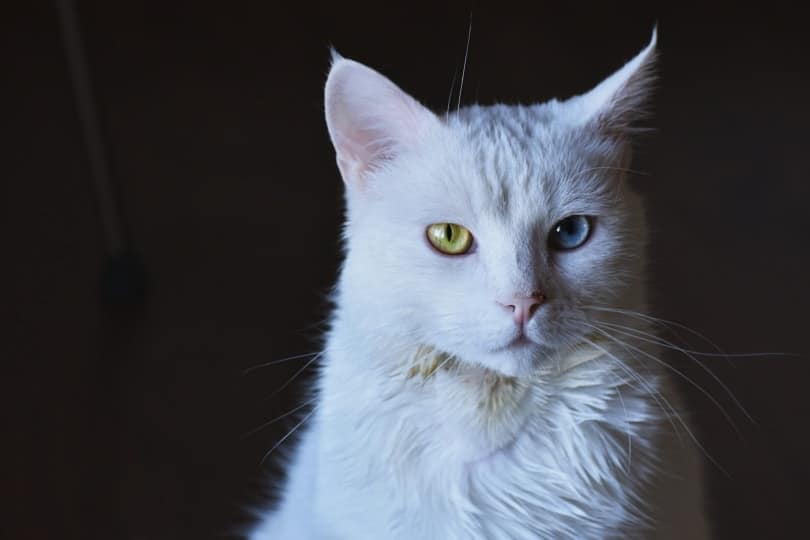
Have you ever seen a cat with odd-colored eyes?
The technical term for odd-colored eyes is heterochromia iridium, where each iris is a different color. This can be inherited, congenital, or because of an accident or injury. Odd-colored eyes are most often seen in white cats with the epistatic gene. Usually, one eye will be blue and the other green, hazel, yellow, or orange.
Odd-colored eyes are popular in particular breeds, including the Turkish Van, Japanese Bobtail, Persian, and Sphynx cats.
️ Rarity: 9/10
8. Dichroic Eyes
Cats with dichroic, or dichromatic, eyes will have a combination of two distinct colors within both eyes. This is stunning and very rare indeed! It’s caused by the cat having different melanin levels in distinct sections of their irises.
Sometimes, the eyes will have a distinct oval of one color nearer the pupil, which then blends into another color. Other times, the colors will be split into sections, so a quarter or half of the eye will be one color, and the remaining section will be a different color. Sometimes, one eye will be solid colored, and the other will be dichroic.
️ Rarity: 10/10
Cat Eye Color Is Linked to Melanin
The color of a cat’s eyes is influenced by several genes. That is why two littermates of the same parents can have different eye colors. The determinants of the color of a cat’s eyes are blue refraction, iris pigmentation, and breeding.
The iris is the part of the eye that presents different colorations. It has two layers. The base layer contains specialized pigment-producing cells called melanocytes. The darkness and intensity of the color will depend on the levels of the natural pigment produced by these cells, which is called melanin.
The more melanin in the cat’s iris, the darker the eyes will be, and the colors can range from lemon yellow to hazel to deep orange or brown. Another factor influencing the color of a cat’s eye is the stroma, which is the outer layer of the iris. The stroma is clear-colored and can vary from almost colorless tones of blue to deep blues and even violets.
A cat’s eye color is the result of the amount of pigment present combined with the blue reflection. Cats with blue-colored eyes lack any pigment; the blue color results from the light refracted by the stroma.
All kittens are born with eyes of cloudy blue. At roughly 6 weeks, this color may start to change to reveal their true eye color. This is when the color develops, depending on the amount of melanocytes present and the melanin produced. By 12 weeks, a cat’s final eye color will be fully developed.
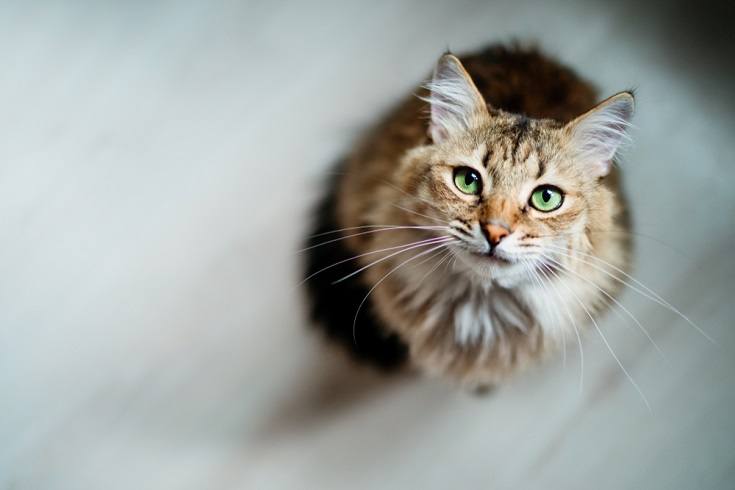
Are Breed and Eye Color Linked?
In some cases, they are. The color of a cat’s eyes is influenced by genetics, just like the color of its coat. Certain breeds will only display one eye color. Siamese cats are a good example of a breed with an eye color linked to their coat color. All Siamese cats have blue eyes in varying shades of intensity. Siamese cats are temperature-sensitive albinos. This means all Siamese kittens are born with white fur that only develops color later in life thanks to a temperature-sensitive enzyme.
Generally, purebred cats will have more vivid shades of eye color than moggies.
Wrapping It Up
Whichever eye color your cat has, it’s absolutely perfect! It’s the combination of each cat’s eye color, coat color, and personality that makes us love them no matter what. If you have a cat with one of the rarer eye colors, we’d love to hear from you!
Also See:
Featured Image Credit: Rebecca L. Bolam, Shutterstock

